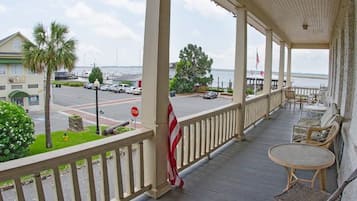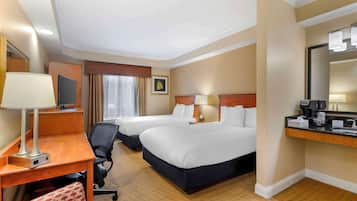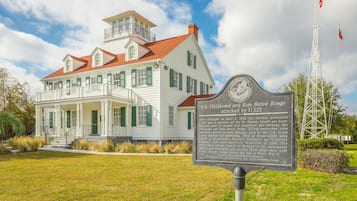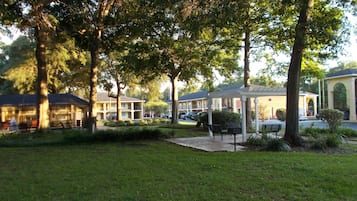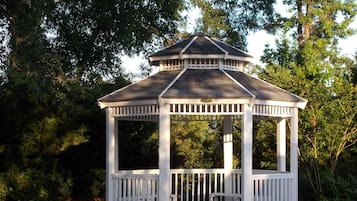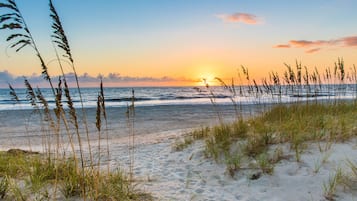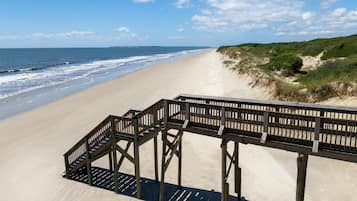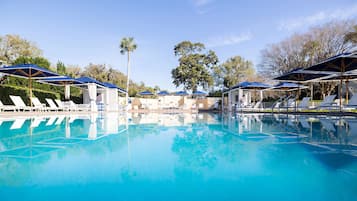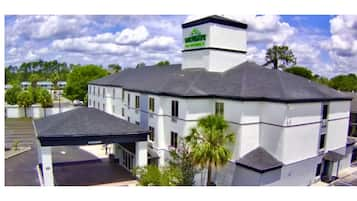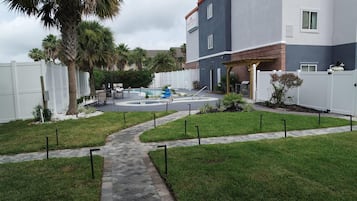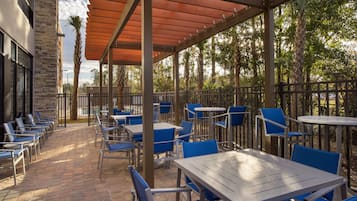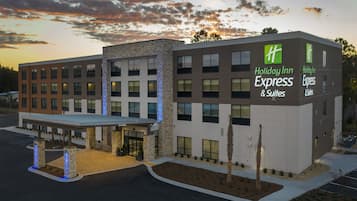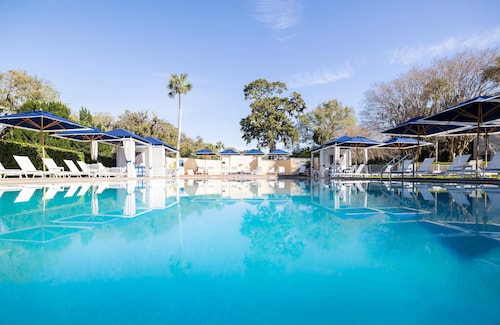Photo by Michael Schuier
Hotels in Cumberland Island
Free cancellation options if plans change
Earn rewards on every night you stay
Save more with Member Prices
Check prices for these dates
Where to stay in Cumberland Island?

Economy Inn
Economy Inn
9.4 out of 10, Exceptional, (13)
The price is $48
$59 total
includes taxes & fees
Nov 26 - Nov 27
Lowest nightly price found within the past 24 hours based on a 1 night stay for 2 adults. Prices and availability subject to change. Additional terms may apply.
Go beyond your typical stay in Cumberland Island
Ocean view
Cottage
Top landmarks in Cumberland Island
Learn more about Cumberland Island
Cumberland Island is well-known for its attractions such as Plum Orchard Mansion and First African Baptist Church.
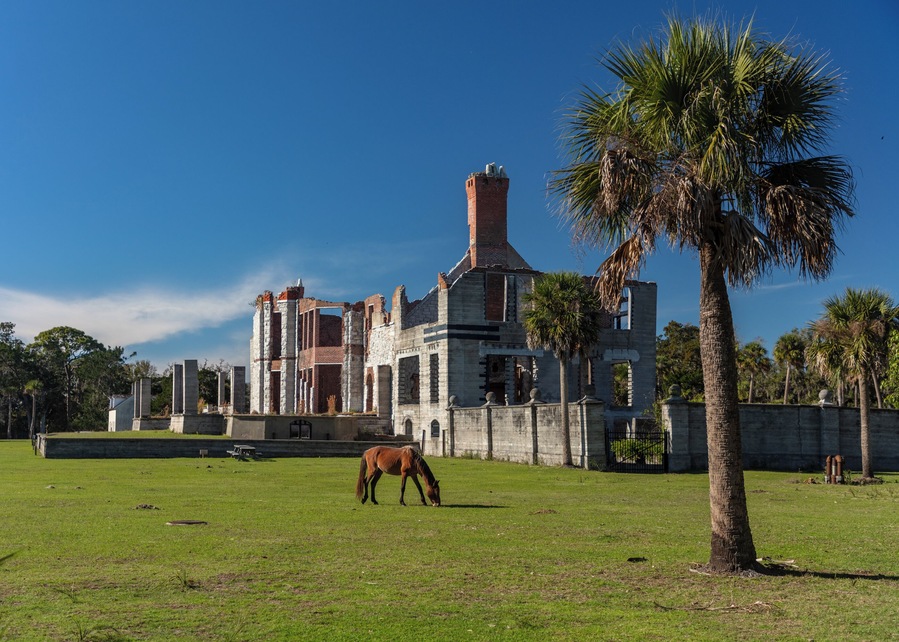
Photo by Michael Schuier
Open Photo by Michael Schuier
Check out reviews of Cumberland Island hotels guests love

Tru By Hilton Brunswick
10/10 Excellent
Frequently asked questions
Keep exploring
- Landmarks
- Hotels close to nearby airports
- Nearby cities
- Top cities in United States of America
- More Hotels
- Most popular destinations
- More ways to book
- Hotels near Cumberland Island National Seashore Visitor Center
- Hotels near Amelia Island Lighthouse
- Hotels near Emerald Princess II Casino
- Hotels near Fort Clinch State Park
- Hotels near Plum Orchard Mansion
- Hotels near Naval Submarine Base Kings Bay
- Hotels near Driftwood Beach
- Hotels near Omni Amelia Island Resort Golf
- Hotels near Fernandina Beach
- Hotels near Jekyll Island State Park
- Hotels near Saint Simons Island Pier
- Hotels near Sea Island Golf Club
- Hotels near American Beach
- Hotels near Cumberland Island Ferry
- Hotels near St. Simons Lighthouse Museum
- Hotels near Jekyll Island Convention Center
- Hotels near Sea Palms Resort Golf Course
- Hotels near Summer Waves Water Park
- Hotels near Jekyll Island Golf Club
- Hotels near Amelia Island State Park
- New York Hotels
- Las Vegas Hotels
- Orlando Hotels
- Chicago Hotels
- Los Angeles Hotels
- Miami Hotels
- San Francisco Hotels
- San Diego Hotels
- Houston Hotels
- Pigeon Forge Hotels
- Gatlinburg Hotels
- San Antonio Hotels
- Nashville Hotels
- Atlanta Hotels
- Boston Hotels
- Austin Hotels
- Key West Hotels
- Fort Lauderdale Hotels
- Honolulu Hotels
- New Orleans Hotels
- Best Western Plus First Coast Inn & Suites
- Beach 5 Villas - Immaculate 300 steps from the Ocean
- Home2 Suites by Hilton Fernandina Beach Amelia Island, FL
- Holiday Inn Resort Jekyll Island by IHG
- Ocean Inn and Suites
- Best Western Plus Kingsland
- Fairfield Inn & Suites by Marriott Kingsland
- Wingate by Wyndham Kings Bay Naval Base / I-95
- The King and Prince Beach & Golf Resort
- Hampton Inn Amelia Island at Fernandina Beach
- Surf and Sand Fernandina Beach at Amelia Island, an Ascend Collection Hotel
- Queens Court
- Saint Simons Inn by the Lighthouse
- Hampton Inn St. Simons Island
- Residence Inn by Marriott Jekyll Island
- Florida House Inn
- Courtyard by Marriott Jekyll Island
- Sea Palms Resort St Simons Island
- Magnolia Inn Kingsland
- Motel 6 Kingsland, GA - Kings Bay Naval Base
- SureStay Plus Hotel by Best Western St Marys Cumberland
- Vintage Amelia Island Apartments
- Villas By the Sea Resort & Conference Center
- Residence Inn by Marriott Amelia Island
- Hampton Inn Kingsland
- Red Roof Inn Kingsland
- Home2 Suites by Hilton St. Simon's Island
- Elizabeth Pointe Lodge
- Best Western Plus St. Simons
- Jekyll Ocean Club
- Hawthorn Extended Stay by Wyndham Kingsland
- Beachside Motel
- Holiday Inn Express Hotel Jacksonville North - Fernandina by IHG
- Village Inn and Pub - Adults Only
- Country Inn & Suites by Radisson, Kingsland, GA
- Baymont by Wyndham Kingsland
- Mariners Suites
- Americas Best Value Inn & Suites Brunswick
- Holiday Inn Express & Suites Kingsland I-95-Naval Base Area by IHG
- Ocean Lodge Resort
- Travelodge by Wyndham Kingsland GA
- Super 8 By Wyndham Kingsland I-95/Naval Base Area
- The Beachview Club
- The Sea Gate
- Economy Inn
- Riverview Hotel
- Econo Lodge Kingsland
- Amelia Schoolhouse Inn
- Comfort Suites Kings Bay Naval Base Area
Most popular destinations
Hotels
- Hotels in Jonesboro
- Cheap Hotels in San Diego
- Hotels in Fayetteville
- Motels Thomasville
- Hotels with Free Breakfast in Waycross
- Hotels in Pooler
- Hotels in Branson
- Hotels in Brunswick
- Hotels in Warner Robins
- Cheap Hotels in Griffin
- Hotels in Boone
- Cheap Hotels in Twin Falls
- Hotels in Weston
- Hotels with Parking in Ironwood
- Hotels in Big Spring
- Hotels in Laconia
- Cheap Hotels in Biloxi
- Hotels in Bainbridge
- Hotels in Blue Ridge
- Family Hotels in Colby
- Hotels in Lawrenceville
- Motels Valdosta
- Hotels in Neenah
- Hotels in McAllen
- Cheap Hotels in Hampton
- Hotels in Pella
- Cheap Hotels in Dothan
- Hotels in Anaheim
- Hotels in South Lake Tahoe
- Cheap Hotels in Hazlehurst












